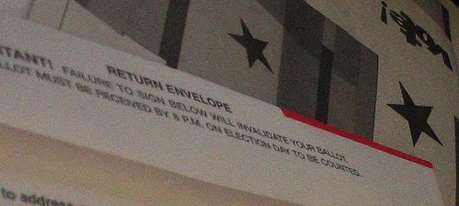California’s initiative process is one of the most open and accessible in the nation. As a result, a variety of sometimes competing measures appear on the same or subsequent ballots. But how well does ballot box budgeting serve the better good?
At the state level, the examples of ballot box budget are clear and polarizing. We have two “millionaires” taxes on the November ballot. High Speed Rail has become a massive project with an estimated cost of three times the original projections – with no track yet laid. The cost-to-results argument is also made about Proposition 71, which approved state funding for stem cell research.
At the local level, the impacts of using the ballot box to determine budgeting decisions can be much more directly felt and identified.
Take, for instance, the libraries in San Jose. An effort to boost funding for library services in the city went before voters in 2004, and they approved the $25 per parcel tax. That money was supposed to boost total revenues for libraries to $48 million per year. Instead, funding peaked at $39 million before being subject to cuts during budget cycles. The budget for all libraries is now down to $32 million, and when the parcel tax expires in 2014, it will fall further to $25 million. However, a new ballot initiative would prevent the gutting of the library budget.
Currently being circulated is an initiative that would carve out a minimum funding level of .04 percent of the assessed property value in the city for library services. That amounts to $42 million per year and an increase of $19 million that will have to be drawn from the general fund budget because the initiative does not raise new revenues for offsets.
That initiative would inflexibly fund just one portion of the city’s services, and in the zero-sum game of municipal financing, that money must come from somewhere. In the case of San Jose, Mayor Chuck Reed has said the $19 million in general fund revenue is the equivalent of 100 public safety employees. Obviously all $19 million would not have to come from a single department, and all offsets wouldn’t have to come in the form of layoffs.
However, all revenues must be offset from somewhere.
It is unlikely that the city council would be able to allow library funding to fall by nearly 40% in just four years. Libraries would close their doors early, or leave them closed. Such a move would be unpalatable by the community and the council. More likely, the council would look for offsets of at least $5 to $7 million, to protect the diminished status quo. That money could be drawn from a variety of sources – minimizing the pain felt by everyone, but still sharing the burden.
Forcing funding of $19 million – increasing library budgets by 40% during a steep municipal recession – would annihilate other services.
That’s the danger posed by ballot box budgeting. When a budget must be balanced, community leaders must balance community interests. That requires the flexibility to prioritize, supplement, or if need be – cut.
Inflexible, carve-out protections like the one being proposed in San Jose are a boon if your department or pet project receives the funding. However, it can be a disaster if you were one of the 100 police or firefighters laid off in the next round of negotiations, or if you wanted to use a city run pool this summer, or if you liked one of a number of other areas where than $19 million would have to be recovered from.
We elect mayors and city council members for a reason: to represent us. Ballot box budgeting might solve one problem, but single-mindedly pursuing a single solution can create ripples with far wider repercussions.





